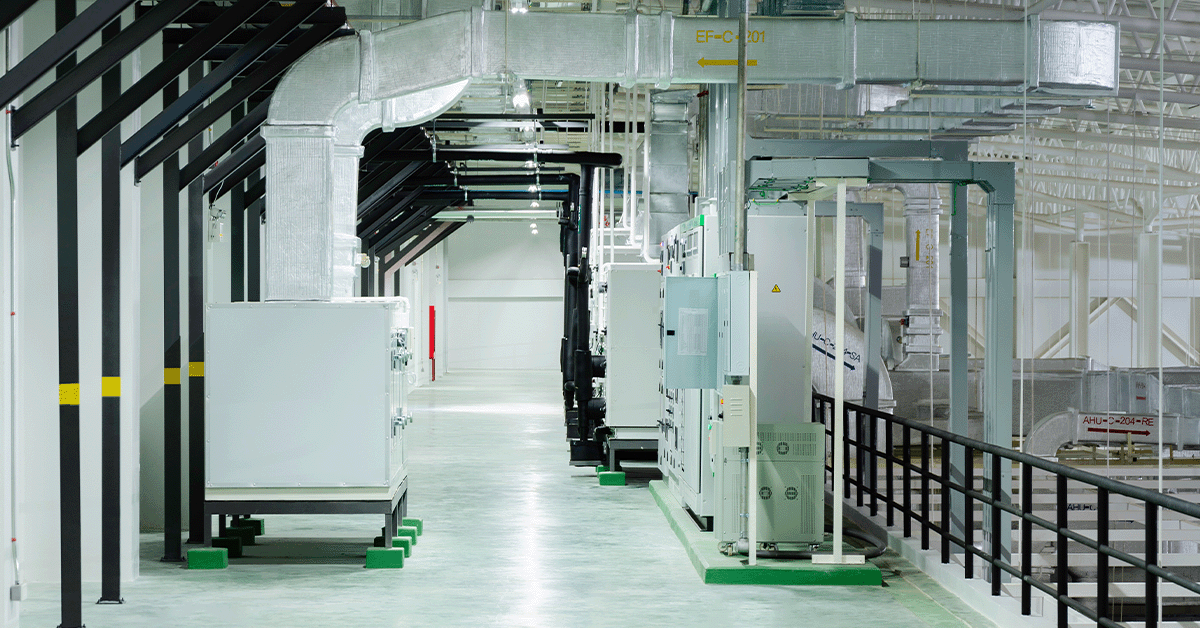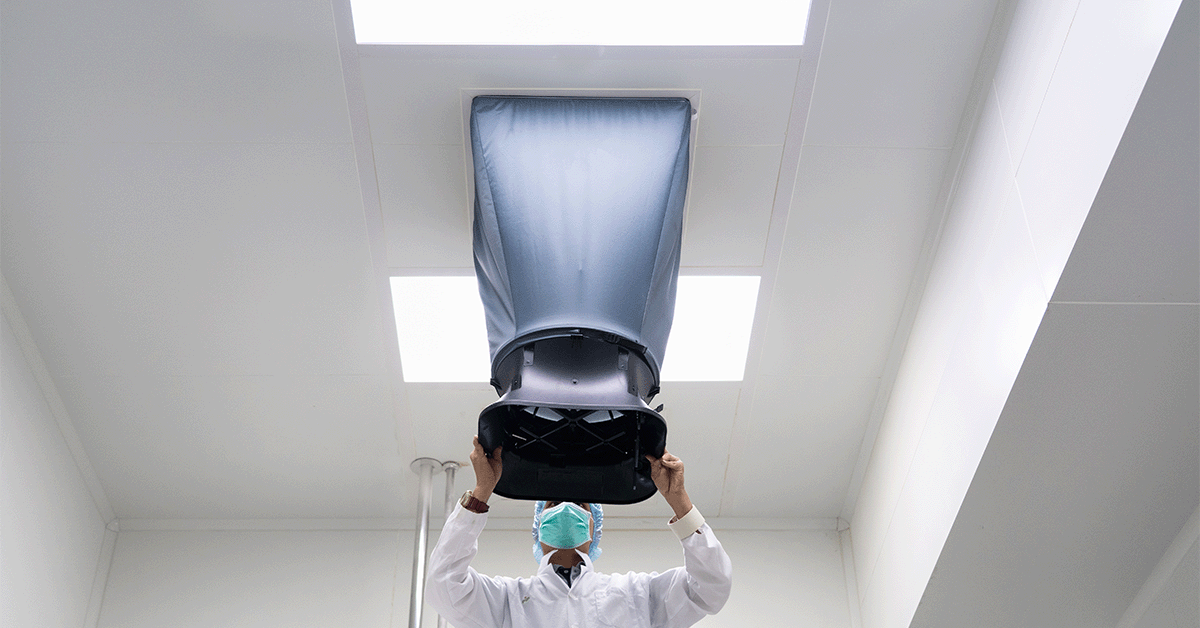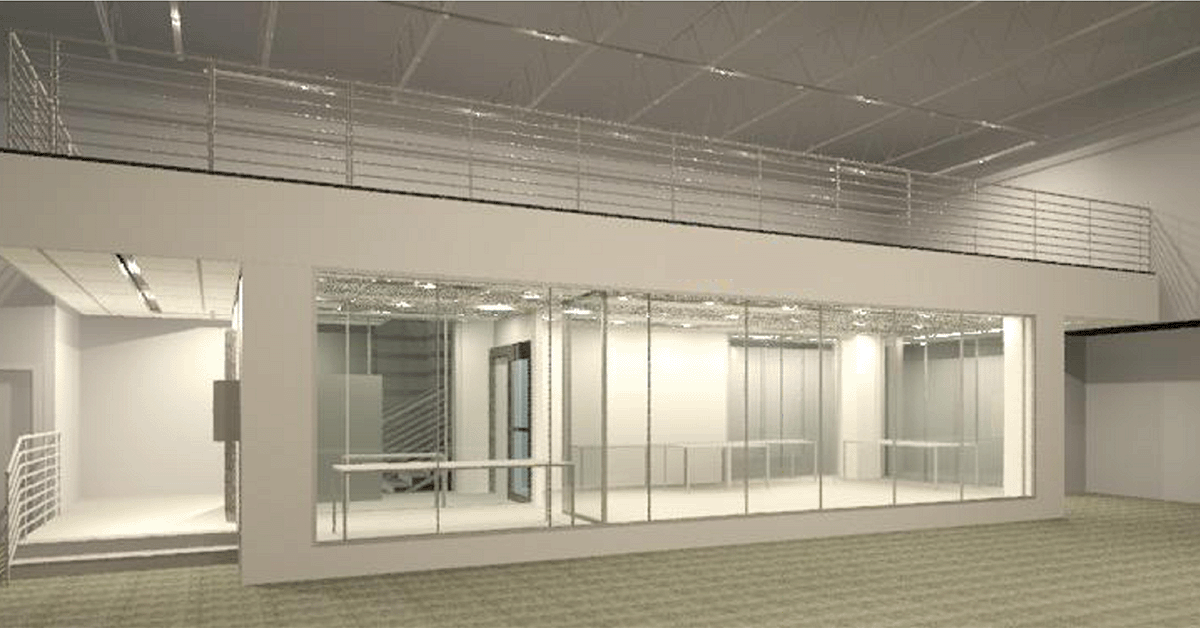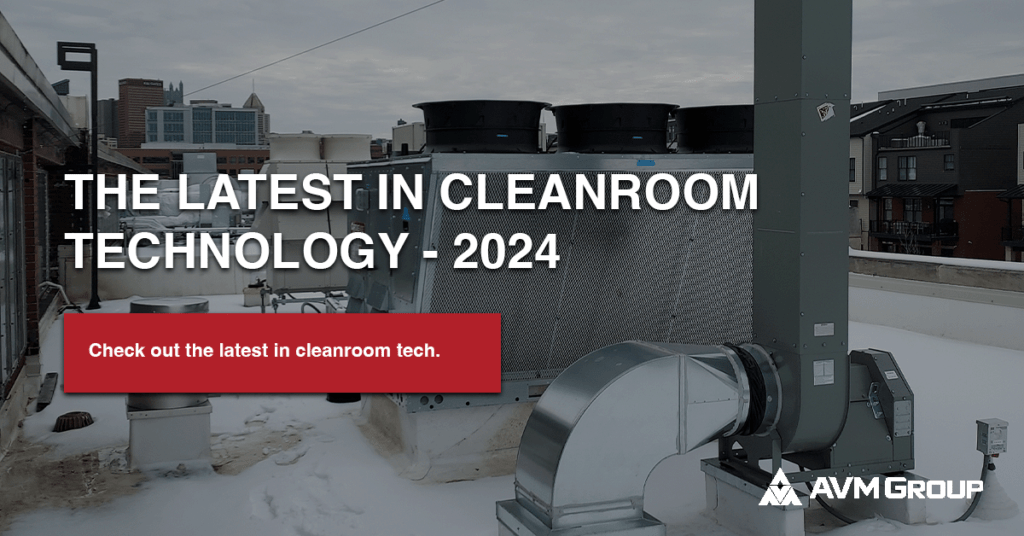*This post is part of a much larger pillar blog: The Complete Guide to Controlled Environments
Table of Contents
ToggleIntroduction
From their origin in the 1960s, cleanrooms have transformed from rudimentary setups to cutting-edge environments incorporating state-of-the-art technology.
As industries’ demands for cleanliness and precision grew, cleanroom technology evolved to address challenges in contamination control, energy efficiency, and automation. In this article, we’ll be diving deep into some of the key cleanroom technology innovations that have taken cleanrooms to the next level.
Key Challenges in Cleanrooms
Technology is developed with a purpose in mind, which is why it’s important to talk about some of the challenges at the forefront of the cleanroom industry. This overview will be brief.
Particle Contamination
Controlling particles of various sizes is critical. In fact, it’s the primary reason most end users require a cleanroom.
Air Specification Control
Maintaining optimal air quality involves managing temperature, humidity, and pressure differentials to the appropriate level for a given process. Any deviation can impact production processes and experimental outcomes.
Microbial Control
Some industries such as pharmaceutical and medical equipment require protection against bacteria, viruses, and fungi, also generally known as “viables”, due to how easily it can negatively impact the processes happening inside of the room.
Energy Efficiency
Cleanrooms are energy-intensive due to the need for consistent temperature and humidity control, so making sure the room is efficient can have a significant impact on the running cost of the cleanroom.

Innovations in Cleanroom Technology
Now that we know more about the most common controlled environment challenges, let’s talk about the innovations that have taken place since the 1960s. Each innovation will be explained briefly, so make sure to check out our blog for more information.
Advanced Air Filtration Systems
High-Efficiency Particulate Air (HEPA) Filters: These filters employ a dense arrangement of fibers to capture particles, ensuring a clean airflow. They are vital for industries like pharmaceuticals and microelectronics.
Ultra-Low Particulate Air (ULPA) Filters: Going beyond HEPA filters, ULPA filters provide even higher filtration efficiency, essential for nanotechnology and biotechnology applications.
GET THE LATEST INDUSTRY NEWS DELIVERED TO YOUR INBOX
Stay on the forefront of your industry with our weekly e-newsletter.
Cleanroom Pressurization Techniques
Positive Pressure Cleanrooms: These maintain a higher pressure inside the cleanroom relative to outside, preventing outside air from entering and carrying contaminants.
Negative Pressure Cleanrooms: Negative pressure prevents contaminants from escaping, making it ideal for facilities working with hazardous materials, like bio containment labs.
Pressurization is achieved through a variety of methods, from statically balanced dampers and fan fi lter units, to modulating dampers, air valves, and exhaust fans equipped with variable frequency drives that dynamically change to adapt to room conditions.
Monitoring and Control Systems
Real-time Air Quality Monitoring: Sensors placed strategically monitor particle counts, temperature, humidity, and pressure, enabling rapid adjustments to maintain optimal conditions.
Automated HVAC Systems: Advanced HVAC systems use feedback from sensors to autonomously regulate airflow, temperature, and humidity, reducing the risk of human error.

Nanotechnology Applications
Nanoparticle Air Filtration: Nanoscale fibers and coatings enhance filtration efficiency, capturing even smaller particles effectively.
Self-Cleaning Surfaces Using Nanocoatings: Nanocoatings on surfaces create a barrier against particles and microbes, minimizing the need for frequent manual cleaning.
Antimicrobial Flooring Options
Flooring materials infused with antimicrobial agents inhibit microbial growth, reducing the potential for contamination.
Robotic Cleaning Systems
Robots equipped with specialized cleaning tools navigate cleanrooms, reducing the need for human intervention and minimizing contamination risks.
Automated Material Handling
Robotic systems transport materials within the cleanroom, minimizing human traffic and potential sources of contamination.
Artificial Intelligence
AI algorithms analyze data from sensors, predicting maintenance needs and optimizing processes, thus improving efficiency and maintaining cleanliness.
Advanced Cleanroom Garments
Garments made from ultra-low particle-shedding materials, incorporating advanced closures and hoods, ensure personnel don’t introduce contaminants.
IoT and PPE
IoT-enabled garments equipped with sensors monitor temperature, heart rate, and other vital signs, alerting personnel to potential risks or the need to exit contaminated areas.
Green Cleanroom Practices
Implementing energy-efficient practices like LED lighting, occupancy sensors, and optimized airflow patterns reduces the carbon footprint of cleanroom operations.
Energy-Efficient HVAC Systems
HVAC systems incorporating variable-speed fans, heat recovery systems, and smart controls contribute to substantial energy savings without compromising cleanliness. New innovations in mechanical systems cleanroom technology could have a major impact.

Future Trends in Cleanroom Technology
We’ve covered the innovations that have already taken place, so it’s time to talk about some of the technology that is currently in development for use in the near future.
Reducing the Size of Cleanroom Equipment
Advancements in miniaturization enable the creation of portable cleanroom units, expanding their usability in various fields and applications.
Integration of Augmented Reality
Augmented reality systems guide technicians through maintenance procedures, offering real-time data overlays and remote expert assistance.
Biometric Access Control in Cleanrooms
Biometric authentication using fingerprints, retinal scans, or facial recognition enhances security, preventing unauthorized access and reducing contamination risks.
Conclusion
Cleanroom technology stands at the crossroads of innovation and necessity.
Industries reliant on precision, safety, and quality are continually pushing the boundaries of what’s possible.
As we navigate the challenges of particle contamination, air quality control, microbial threats, and energy efficiency, embracing advancements in filtration, automation, and materials will define the next era of cleanroom technology.
Staying informed about these cleanroom technology trends and adopting best practices will ensure industries can harness the full potential of cleanroom technology, safeguarding their products, processes, and people.



